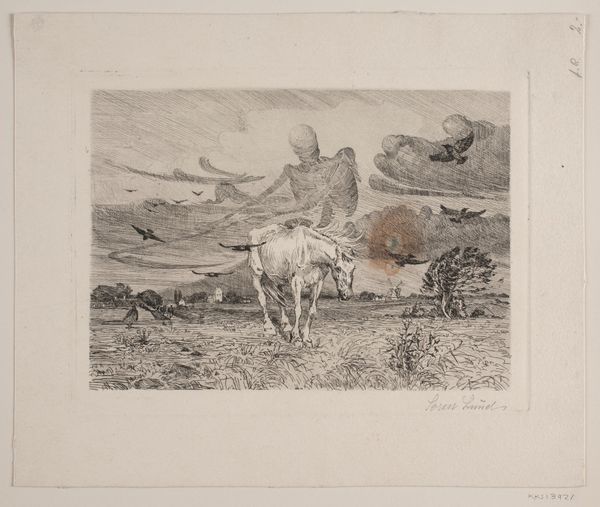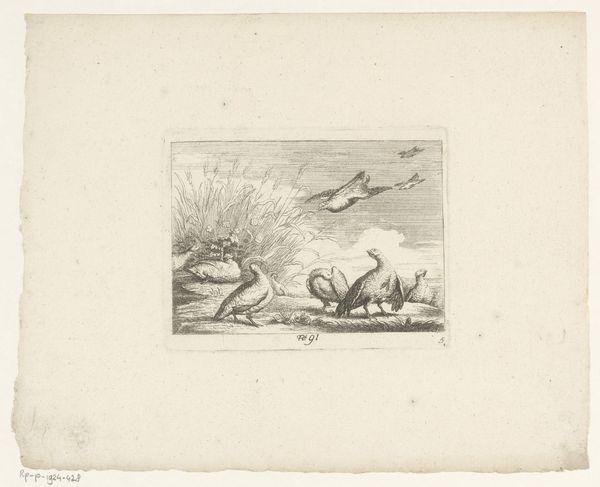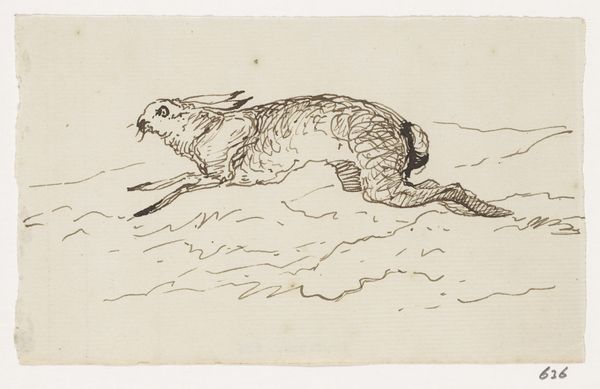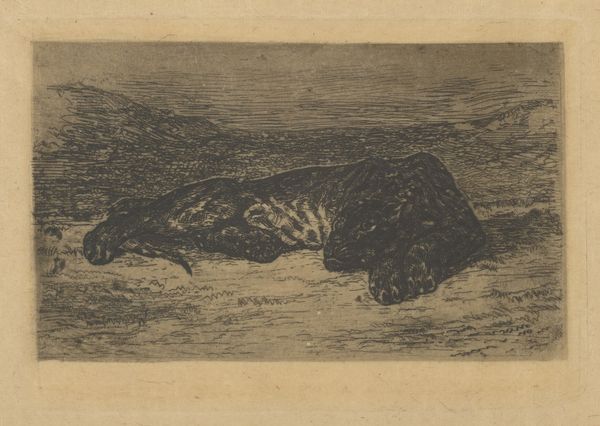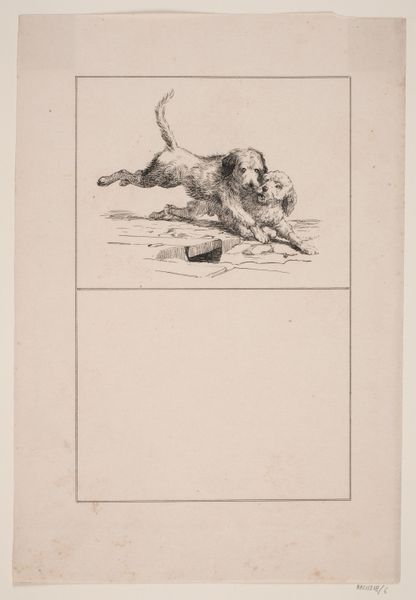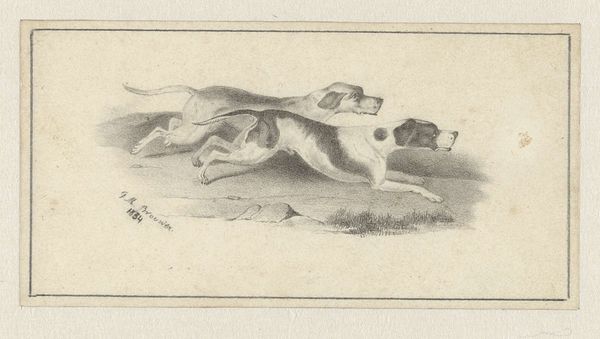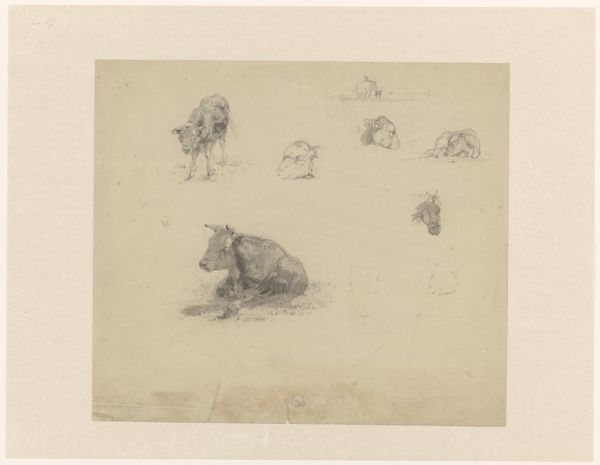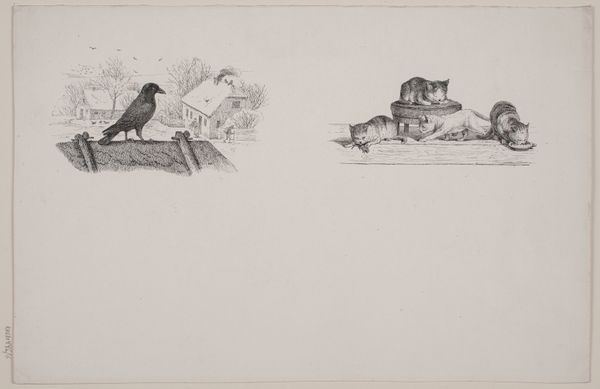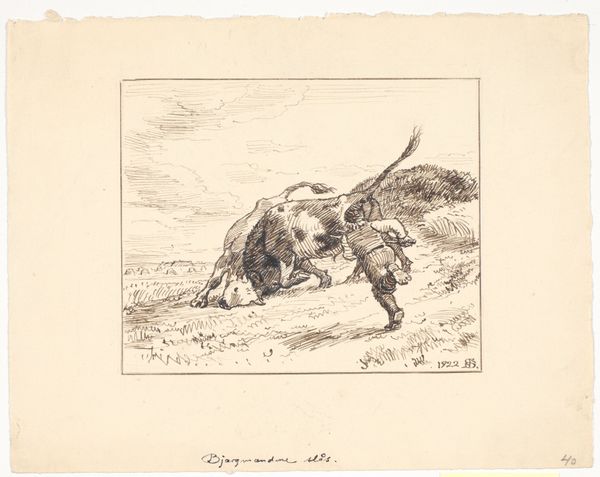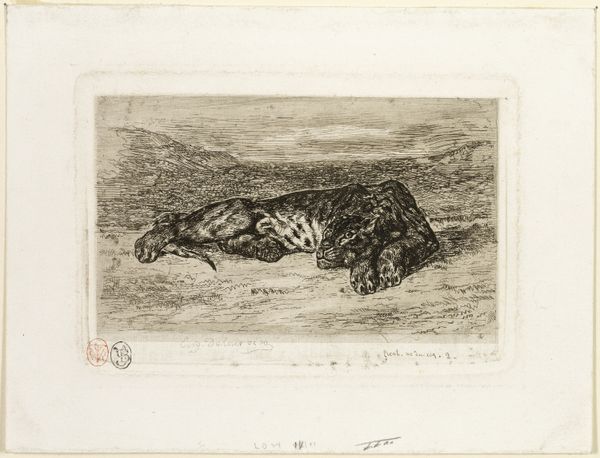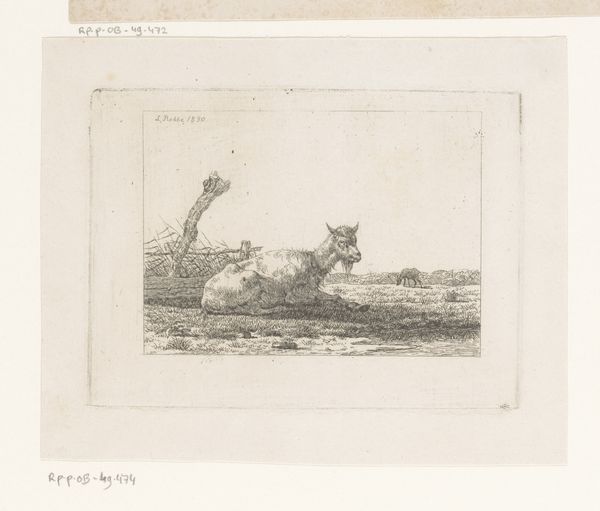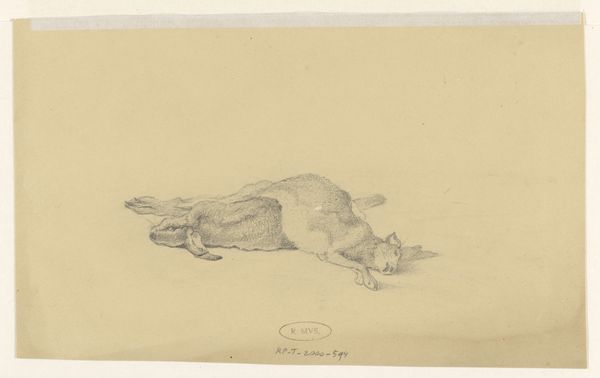
drawing, lithograph, print, etching, paper, charcoal
#
drawing
#
lithograph
# print
#
etching
#
landscape
#
figuration
#
paper
#
romanticism
#
charcoal
#
realism
Dimensions: 185 × 229 mm (image); 201 × 243 mm (chine); 292 × 420 mm (sheet)
Copyright: Public Domain
Curator: Géricault’s lithograph “Dead Horse” from 1823 presents an arresting image of mortality set within a stark winter landscape. Editor: Immediately, I am struck by the tonal range Géricault achieves in monochrome. The texture in the horse’s coat is incredible; the bleakness is palpable. Curator: Absolutely. Note how the artist uses a subtly modulated chiaroscuro to enhance the dimensionality of the form and the contrast of textures—rough coat against the smooth expanse of snow. Also, observe the implied line of sight leading from the fallen animal towards the sparse buildings on the horizon, directing our eyes into the image's depth. Editor: Yes, beyond the purely formal aspects, this image clearly resonates with loaded cultural meaning. The horse itself has traditionally represented virility and strength; to see it in this state suggests decline or vulnerability. I am reminded of the prevalence of images featuring dead animals that signify loss. Curator: Precisely, while death is, of course, an ever-present subject in art, it is how Géricault manipulates tone and line, coupled with the subject's vulnerability, that generates such potent affective experience in the viewer. It's a triumph of technique augmenting affect. Editor: And what does this evoke in our collective visual memory? This lone horse seems to mirror societal failings or lost idealism – like the broken cart wheel near its head. Do the birds circling overhead presage something more? It evokes profound somber reflection. Curator: True. The realism inherent in the subject serves here less as pure objective documentation, and far more as potent device. It becomes almost sculptural in its presentation, forcing the observer to confront not just mortality itself, but also the ephemerality of strength. Editor: Géricault has created, in the end, an emotionally resonant tableau through both direct representational image, and powerful metaphoric symbol. Curator: Indeed, both aesthetically affecting, and symbolically potent, “Dead Horse” offers ample opportunities to examine artistic excellence, coupled with socio-cultural meaning.
Comments
No comments
Be the first to comment and join the conversation on the ultimate creative platform.
